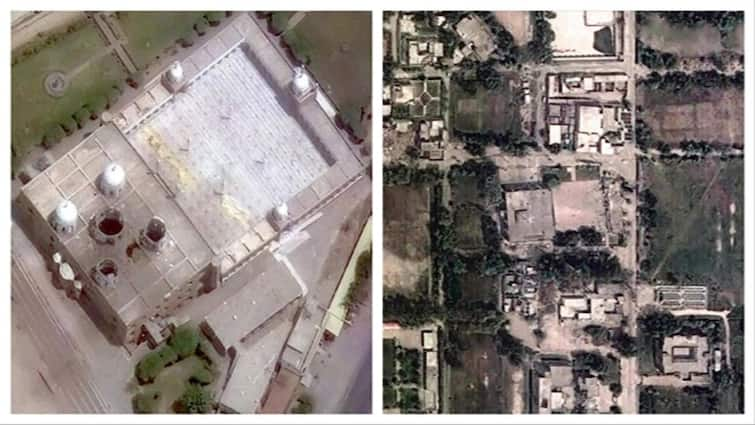For the past two months, ABP News has been at the forefront of uncovering how Pakistan’s terror networks are reorganizing in the aftermath of Operation Sindoor. Last month, we revealed how groups like Lashkar-e-Taiba (LeT) and Jaish-e-Mohammed (JeM) shifted several of their training camps near the Afghanistan border.
Today, we take our investigation a step further. In an exclusive report, we show you the militant bases in Pakistan-occupied Kashmir (PoK) where terrorists are kept before being sent across the border into India. We also expose the so-called “launchpads” from where these militants attempt infiltration.
Here’s a detailed look at Pakistan’s terror machinery, captured in our Super Exclusive coverage.
Exclusive Glimpses of Three Terror Camps in PoK
ABP News brings you never-before-seen visuals from three terror camps:
- Huzaifa bin Inam Camp, Kotli – A Lashkar-e-Taiba base near the Pir Panjal range.
- Ibn-e-Tamiyah Camp, Barali Village – A Jaish-e-Mohammed camp hidden in dense forest.
- Abdullah bin Masood Camp, Muzaffarabad – One of LeT’s oldest training grounds.
Each of these camps plays a critical role in preparing militants for infiltration, from basic training to final operational readiness.
A Staging Ground in Kotli: The Huzaifa bin Inam Camp
On a remote hillside near Kotli, nestled against the Pir Panjal range, lies a camp that most of the world has never seen. This is the Huzaifa bin Inam Camp, a Lashkar-e-Taiba base where militants are held before being sent across the border. Wooden structures rise amid rugged terrain, LeT flags fluttering ominously in the wind.
Inside, militants undergo final preparations. We obtained photographs showing three terrorists who were staged here prior to attempted infiltration. Every detail — from their equipment to their movements — is meticulously planned.
Secrets in the Forests of Barali: The Ibn-e-Tamiyah Camp
A few kilometers away, deep inside the forests of Barali village, is Jaish-e-Mohammed’s Ibn-e-Tamiyah Camp. Camouflaged with the trees, the camp looks almost peaceful from a distance, but its purpose is far from it. Here, militants spend their last days training before crossing the border.
Among the striking images we captured: a militant holding an AK-47 while performing prayers. It’s a stark reminder of the chilling blend of discipline, ideology, and violence that fuels these operations.
The Oldest Base in Muzaffarabad: Abdullah bin Masood Camp
In Sirikot, Muzaffarabad, lies one of LeT’s oldest camps — the Abdullah bin Masood Camp. Once a center for Fidayeen training, it now houses militants for up to ten days before infiltration. Our footage shows six militants leaving the camp, backpacks slung over shoulders, ready to cross into India. Nearby hills hide more operatives, rifles at the ready, waiting for the perfect moment.
The Modus Operandi of Pakistan’s Terror Network
According to defense experts, Pakistan’s terror machinery follows a systematic pattern:
- Initial training in Punjab and Khyber Pakhtunkhwa.
- Transfer to PoK camps near the Indian border for final preparation.
- Militant infiltration across the border, timed according to weather and operational conditions.
Defense experts explain that Pakistan’s terror network follows a methodical plan: militants train in Punjab and Khyber Pakhtunkhwa, move to PoK for final preparations, and then attempt infiltration, carefully timing their moves with weather and operational conditions.
Lt. Col. (Retd.) Sanjay Kulkarni, defense expert:
“Following the attack in Pahalgam, the Indian Army is on high alert. Over 20 terrorists have been neutralized during infiltration attempts, including Samandar Khan, who was responsible for transporting terrorists across the border. Despite this, Pakistan’s ISI continues to operate these launchpads.”
Col. (Retd.) Shailendra Singh, defense analyst:
“Every stage, from training to infiltration, is meticulously planned. JeM’s Asgar Khan and LeT’s Gulam Abbas coordinate the operations, all under the supervision of ISI’s sector commander, Brigadier Faiz Ayub. They decide where militants are housed and which launchpads are used for infiltration.”
This report reveals the meticulous planning and operational depth behind Pakistan-backed terrorism targeting India. From the forests of Barali to the hills of Kotli and Muzaffarabad, the system is chillingly organized, showing the lengths these networks go to in preparing for cross-border attacks.



